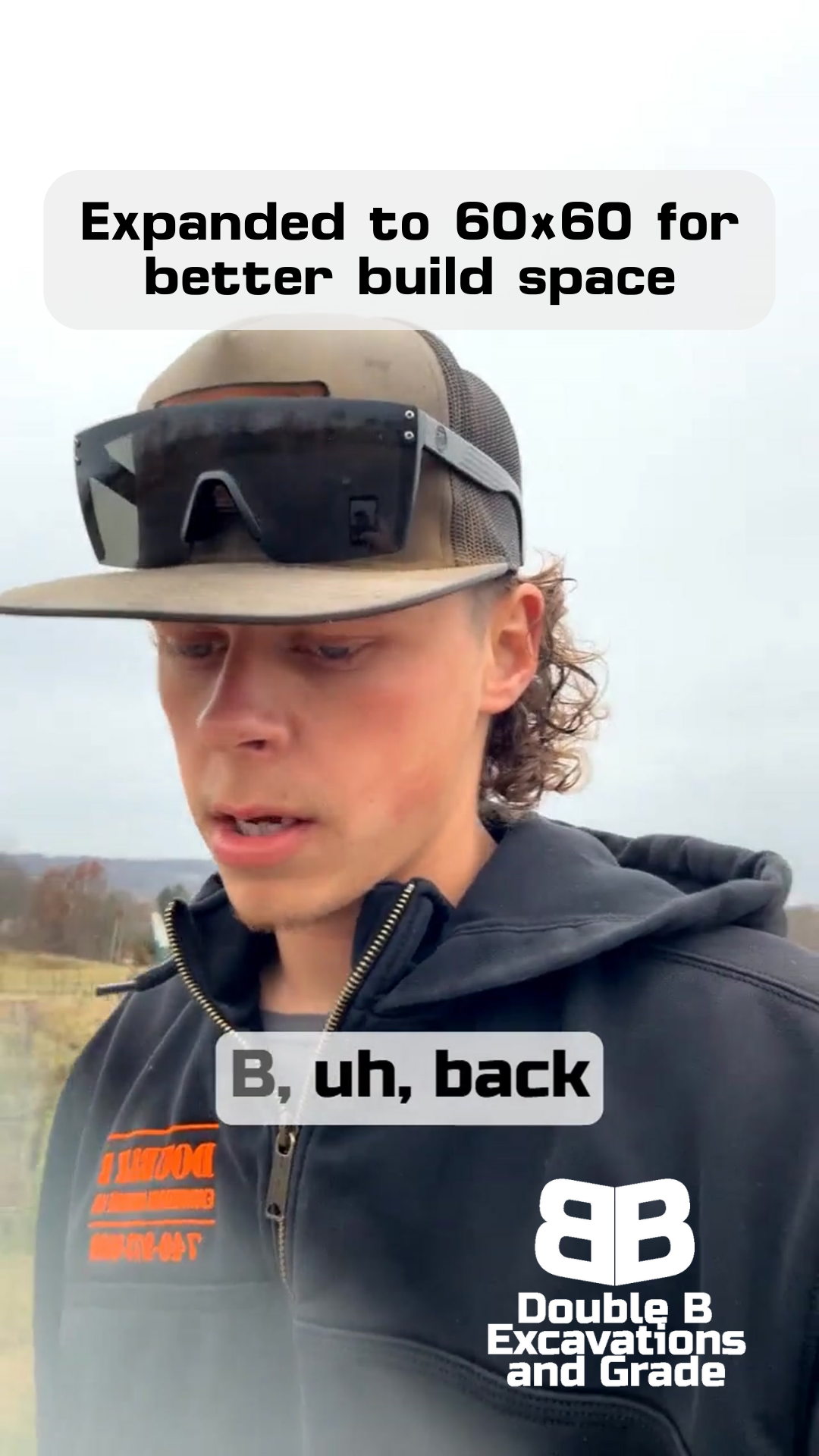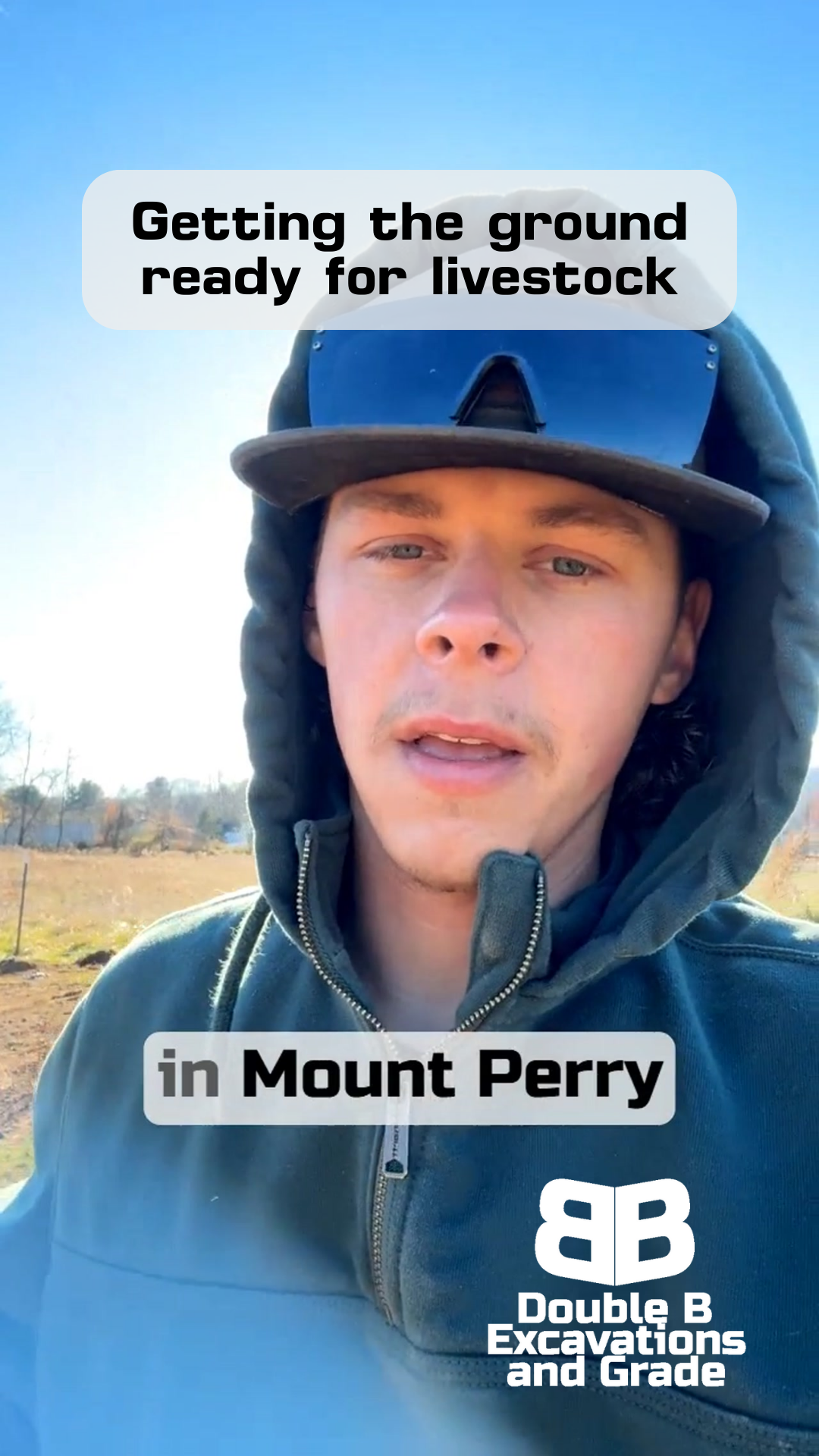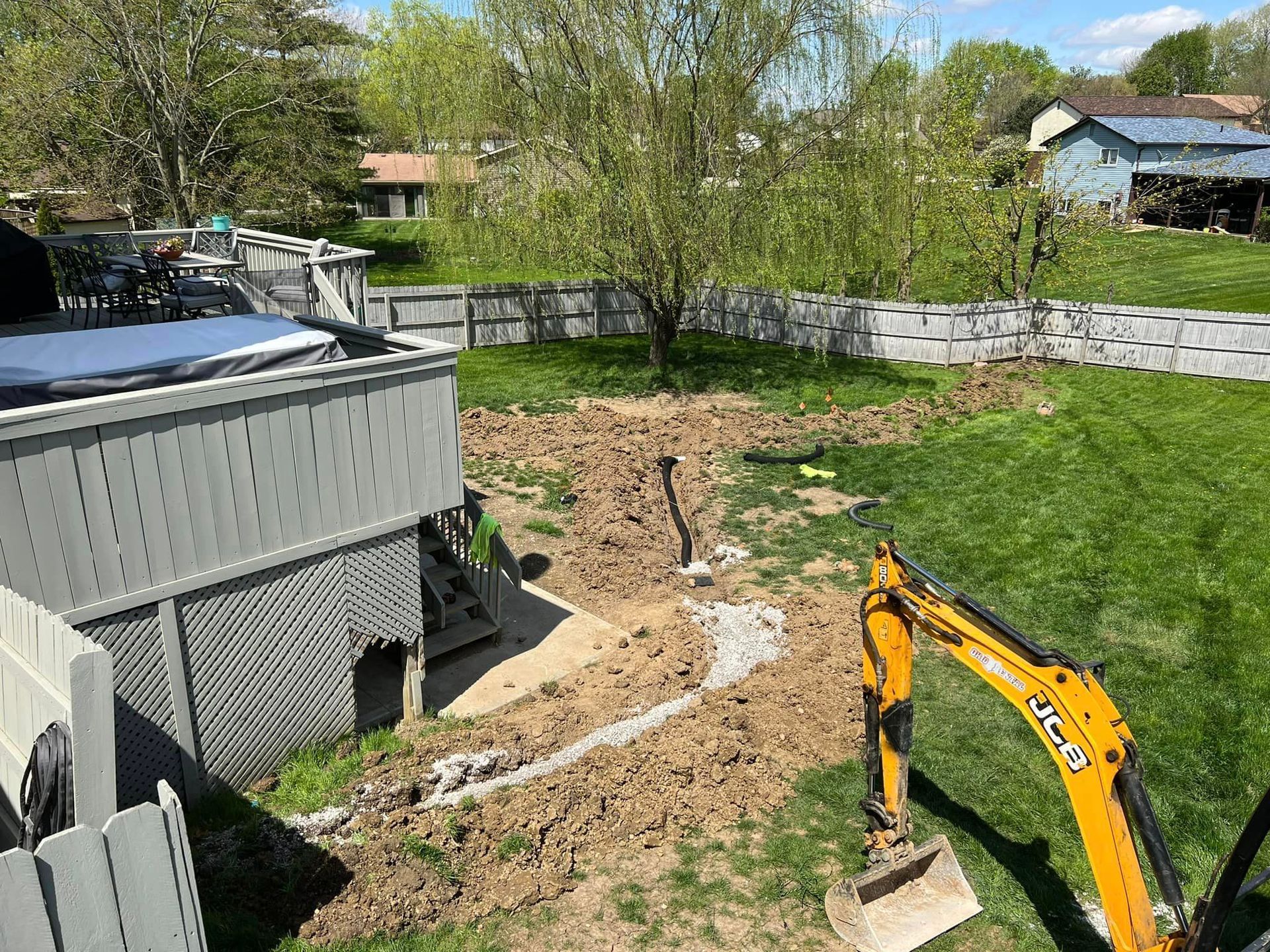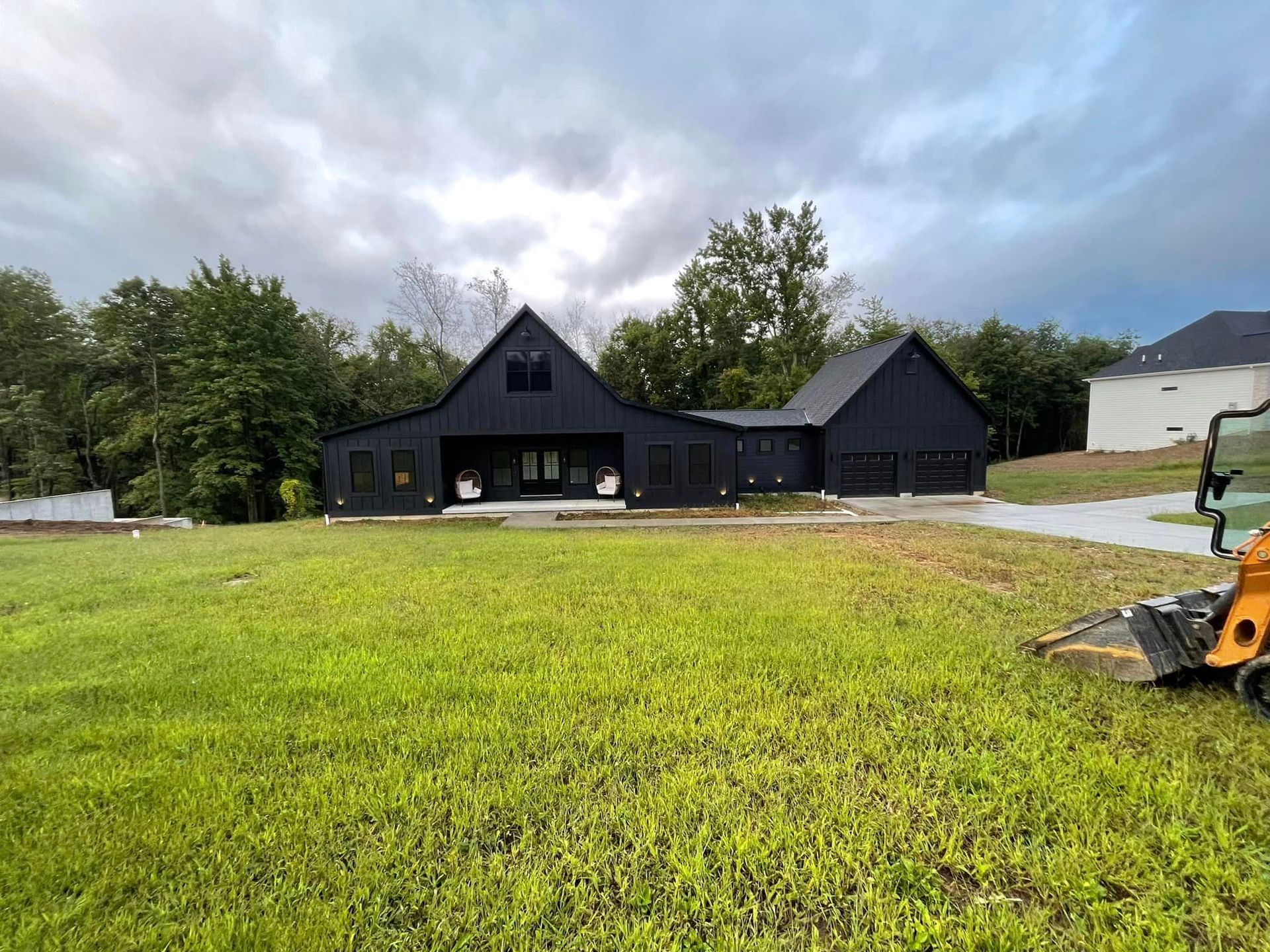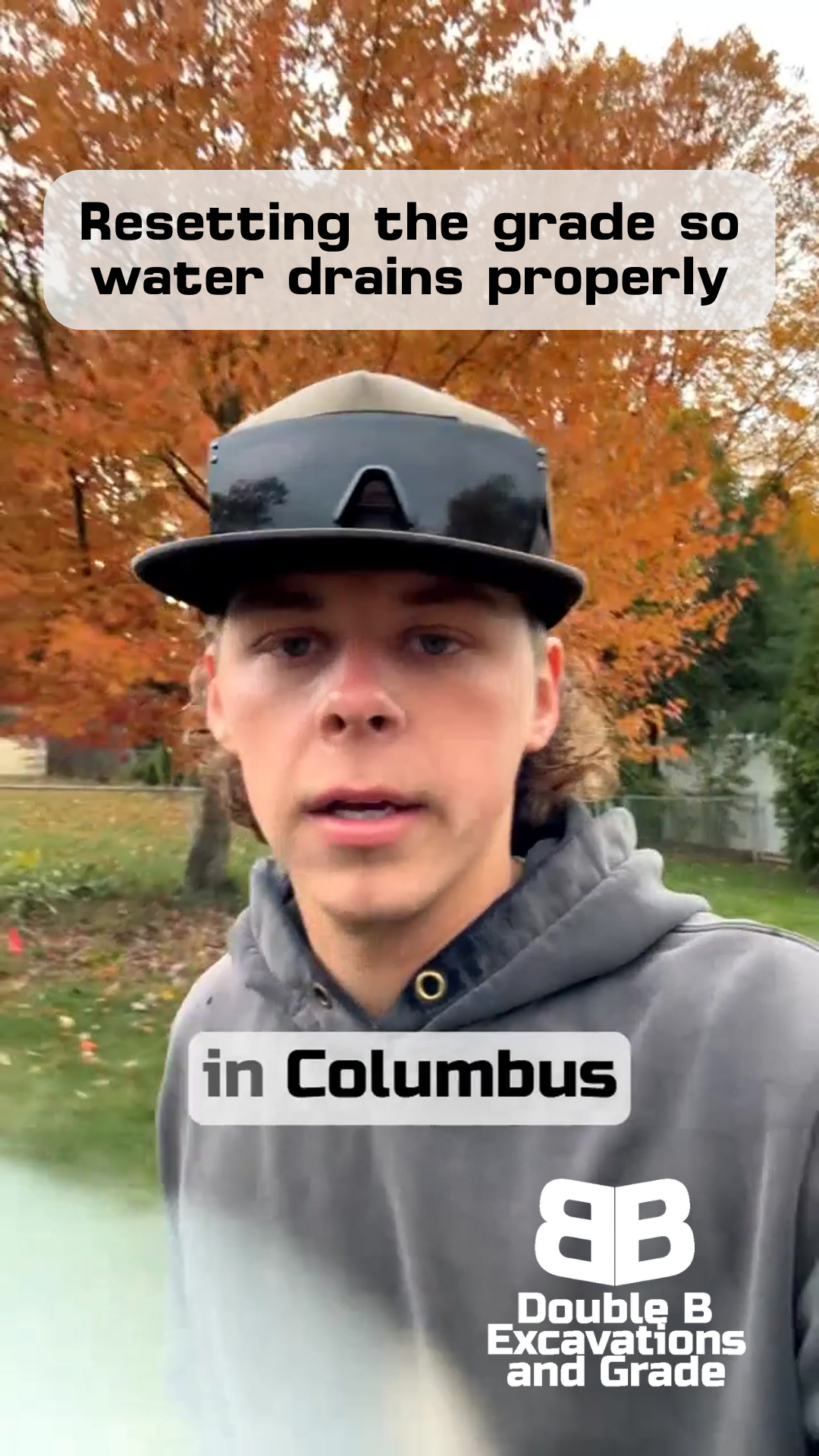Why Culverts Fail: Real Examples from a Pickerington Drainage Repair
Double B Excavations & Grade LLC
When Projects Get Tricky
WHY TEAMWORK AND STRATEGY MATTER MOST
When we dug down about three feet at our Pickerington job site today, we found exactly what we expected - and that's not a good thing.
Water had completely undermined the culvert system, washing away essential support material and creating a situation that just keeps getting worse.
This is the kind of problem we see too often.
Property owners notice some minor issues, try a quick fix, and before they know it, they're dealing with a major drainage problem that threatens their entire driveway or access road.
What starts as a small issue becomes a big headache because the original culvert wasn't installed properly.
Welcome to Double B!
The Problem Uncovered
At this Pickerington site, we found two culverts that were essentially hanging in space. The water had found its weakest point and did what water always does - it carved its own path. With no proper stone support holding these culverts in place, the water simply washed away the surrounding material, creating a void that keeps growing larger.
What we discovered was pretty striking. Even our excavator was tilting because the ground had been so thoroughly undermined. The homeowner had been trying to fix this problem over time, but without addressing the root cause, every repair was just temporary. All we found was organic material - basically just dirt and debris - where there should have been proper stone support. When you're dealing with thousands of gallons of flowing water, dirt just isn't going to cut it.
Understanding the Failure Points
Let me tell you what happens when a culvert isn't properly supported. Water is relentless - it never stops working. Every time it rains, every time snow melts, that water is looking for the easiest path downhill. When it finds a weak spot around your culvert, it starts carving away at whatever material is there.
In Pickerington, what we found was pretty typical of these failures. Instead of proper stone support, these culverts were just surrounded by organic material - basically dirt and whatever else had washed in over time. Here's the thing about dirt: it might look solid, but once water starts moving through it, it just keeps washing away. It's like trying to hold back a river with sand - it's just not going to work long-term.
Common Installation Mistakes
The biggest mistake we see, and exactly what happened here, is people trying to save money by skipping the proper stone support. It might seem like overkill to bring in specific types of stone just to surround a culvert pipe, but there's a reason we do it. That stone creates a stable structure that water can't easily wash away.
Another common problem is when property owners try to fix failing culverts by just adding more dirt or filling in washouts as they appear. We understand why - it seems like an easy fix. But here's what's really happening: underneath, the water is still doing its thing, washing away material and creating bigger voids. Every time you fill in that washout, you're just treating the symptom, not fixing the actual problem. Meanwhile, the situation underground keeps getting worse until you end up with what we found today - culverts that are basically suspended in air because all their support has washed away.
The Real Cost of Cutting Corners
When you look at what happened in Pickerington, you start to understand the real price of taking shortcuts. What started as a simple culvert installation turned into years of constant repairs. The homeowner kept trying to fix the washouts, probably spending good money on material and time, but it was like throwing that money right into the creek.
But it's not just about the repeated repair costs. When culverts fail like this, they can take your whole driveway with them. We've seen cases where failing drainage systems have undermined driveways so badly that vehicles can't safely cross anymore. That's not just an inconvenience - it's a serious safety issue.
Proper Installation Methods
The right way to install a culvert isn't complicated, but it does require the proper materials and approach. Instead of just dropping a pipe in a hole and covering it with dirt, we create a proper stone base and surround the entire culvert with stone that water can't easily wash away.
This stone support system does two important things: it holds the culvert firmly in place, and it allows water to flow around the pipe without washing away the supporting material.
The Bigger Lesson
Looking at this Pickerington project, it's a perfect example of why doing things right the first time matters so much. Sure, proper installation with the right materials might cost more upfront, but it's nothing compared to the cost of repeated repairs and eventual replacement when things go wrong.
Looking Forward
If you're dealing with drainage issues or thinking about installing new culverts, take a lesson from what we found here.
Water always wins against shortcuts. But with proper installation and the right materials, you can have a drainage system that works reliably for decades.
Need help with culvert installation or repairs in central Ohio? We're always happy to take a look at your situation and give you honest advice about what's really needed.
Because at Double B, we'd rather do it right the first time than have to come back and fix it later.
